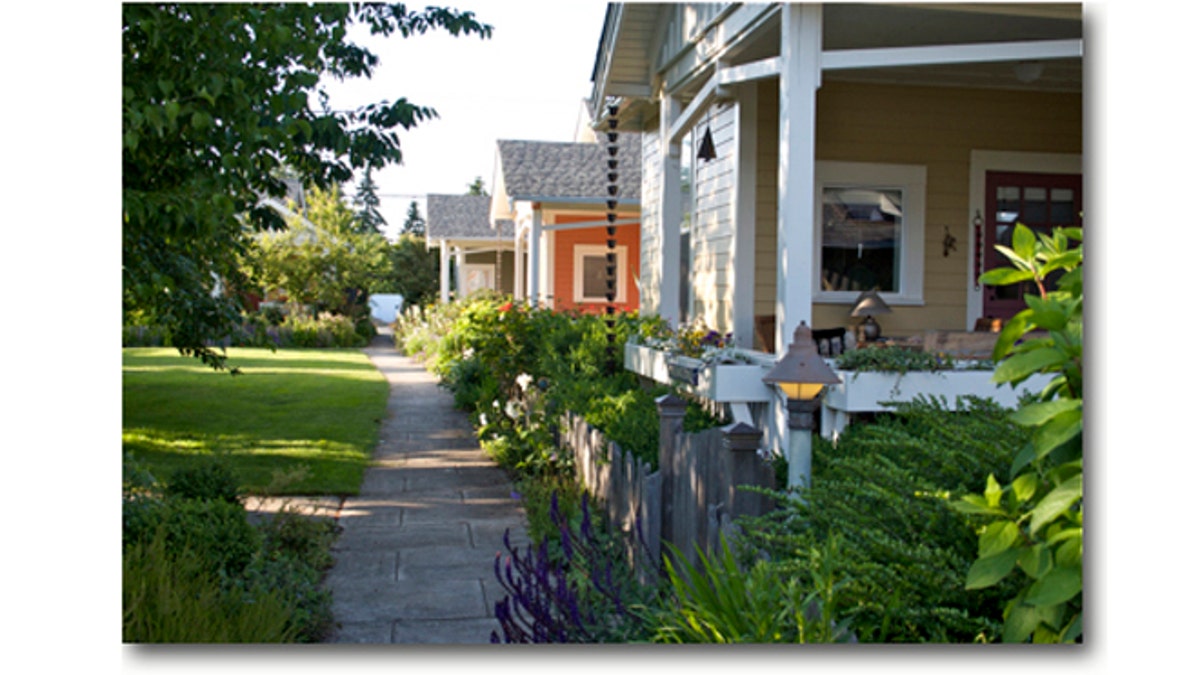
(Zillow/pocket-neighborhoods.net)
Most people dream about their ideal house: the number of bedrooms, the size of the kitchen or garage, or the view from the deck. But what about a dream neighborhood?
This is the question architect Ross Chapin began pondering. He was at a point in his life where he felt like he needed to do more through his career.
“The primary focus of my work is well-crafted, sensible homes, but I thought, ‘how am I really contributing to what is happening in our society?’” Chapin explained. “And I thought ‘I know how to do this.’”
Chapin teamed up with developer Jim Soules, and together the pair built the first contemporary pocket neighborhood, which focused on creating a dream home within a dream community.
A new approach
“No matter what house it is, a house is always in context,” Chapin said. “What is the context of where houses are?”
His new context was a group of smaller homes -- at least smaller compared to the American standard -- grouped around a central concept: a neighborhood within a neighborhood.
The homes usually number around a dozen and center around a shared garden, quiet street or alley. The homes even can be apartments, so long as the homes are focused around a common area, rather than segmented and facing the street.
“Pocket neighborhoods are really built around the fact that our human nature is social,” Chapin said.
“When a small group of people are together, they chat, conversation is spontaneous. With a pocket neighborhood, I’m trying to provide privacy -- that’s essential -- but balance it with the opportunity to engage with other neighbors.”
This isn’t a radical or really new idea, says Chapin. But his take is the first contemporary example of pocket neighborhoods, and as a concept, it has taken off. Chapin authored a book about the idea, and every day he fields calls from across the country and beyond from people interested in innovative housing.
Pocket neighborhoods have popped up throughout the U.S., from Chapin’s home base in Washington state to a new neighborhood called Inglenook, which is currently being constructed in Carmel, Ind.
Redefining the dream
Who likes pocket neighborhoods? Chapin argues that we’re all drawn, as social creatures, to community. But in the 15 years since he first developed pocket neighborhoods he’s found a few groups who really identify with the idea.
“One is the baby boomers, as they move toward retirement,” Chapin said. “We’re seeing huge numbers of people who are trying to imagine their dream home for the next part of their life. A house that’s big enough but not too big, simpler and where the key notes are quality and community.”
Other groups include active single women as well as echo-boomers -- the 20- and 30-somethings trying to define their idea of the dream home.
Finding common ground
Chapin’s projects started in the Pacific Northwest -- his first neighborhood was on Whidbey Island, outside Seattle -- but he emphasizes that a pocket neighborhood doesn’t need to be a cluster of homes facing a park.
“It can be urban houses on an alley where the alley becomes the common. Or it becomes an apartment building, where it’s reconfigured to be a community-orientated building,” he said.
No matter the function, pocket neighborhoods are Chapin’s answer to what he sees as a fraying of society.
“In the last 60 years, we’ve had a version of the American Dream that has had this single-family home as the ideal,” he said. “I think we have to change the definitions of the good ol’ American Dream house."
Related:
- Tiny House Movement Growing Bigger
- National Day of Unplugging Starts at Home
- Budget Friendly Bargains: Homes for the Price of a Car